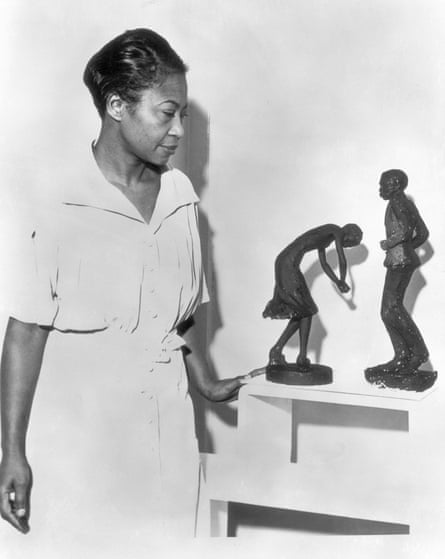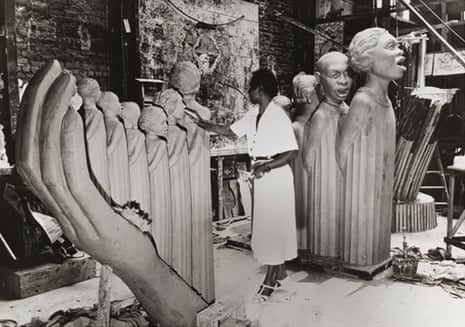Last week, Tate Britain unveiled a complete rehang of its collection, the first time in a decade that the institution has displayed its treasures anew. The focus? Women. “Women artists will be better represented than ever before,” its announcement read. “Half the contemporary artists on display will be women.” Progress, you might think, but how has it taken until 2023 for women to be given such space in one of Britain’s most beloved and respected museums?
In historical terms, it’s partly because society hasn’t presented us with a vision in which women own certain spaces. Take a portrait commissioned to show the 36 founding members of the Royal Academy of Arts in London, of whom two were women, Angelica Kauffman and Mary Moser. Instead of painting them alongside the men who were all decked out in suits and studying a nude model, the painter Johann Zoffany reduced them to two almost unrecognisable portrait busts in the corner of the room. (The Royal Academy did not admit women to the life-drawing studio until the 1890s.)
Women’s work has also been hidden from view. In 2019, a large version of the Last Supper by the nun-artist Plautilla Nelli from around 1568 went on view at the refectory of Santa Maria Novella, Florence – its first outing.

Women have been crowded out not only on museum walls, but also in the places where they have made their work. When Lee Krasner shared a home with her husband, Jackson Pollock, in Springs, Long Island, her studio was confined to the spare bedroom, while he had the sprawling barn. And when winter came, she was the one forced to relocate to the living room.
Then there are the times women’s works haven’t even survived. At the 1939 World’s Fair in New York City, a 16-foot-high sculpture stood in its centre. Elegantly shaped like a harp, Lift Every Voice and Sing depicted 12 singing figures in floor-length robes standing in the palm of God’s hand, and a kneeling child. The work, by Augusta Savage, was commissioned to show the contribution to music by African Americans. But, despite the national press coverage it earned, it was destroyed after the fair due to an inability (or lack of will) to fund its storage. What impact would this work have had on future generations if it had been preserved?
This story makes me think about how many other works have been destroyed because they were created by, or depicted, people regarded as unimportant, while the works that have remained reinforce a narrative about the greatness of white men. The author Kate Mosse pointed out in her book Warrior Queens and Quiet Revolutionaries that there are more statues in the UK of men named John than there are statues of women, and in Edinburgh there are more statues of animals than named women.
Last year, when I interviewed the American artist Amy Sherald – who rose to fame after painting the presidential portrait of the first lady Michelle Obama, the first African American woman to do so – she recalled the power of seeing African Americans represented in art as a little girl: “I remember thinking, I wonder what my life would feel like if every single statue that I ever walked by … in all these different public spaces, looks like me?”
How different our lives would be if we saw ourselves reflected on museum walls and in public spaces. Representation is key because seeing something created by someone that looks like you empowers you, makes you feel part of the conversation, and encourages you to achieve the same things as them. But it also teaches us how to treat and respect those in society who may seem different from us. Because despite the progress of showing women’s work today, it is still being sidelined, delimited, and asked to be reduced in size. Any art or anyone is worthy of taking up space and we must go out of our way to accommodate that, no matter our gender or background.
after newsletter promotion

